The ultimate guide to bathroom renovation planning
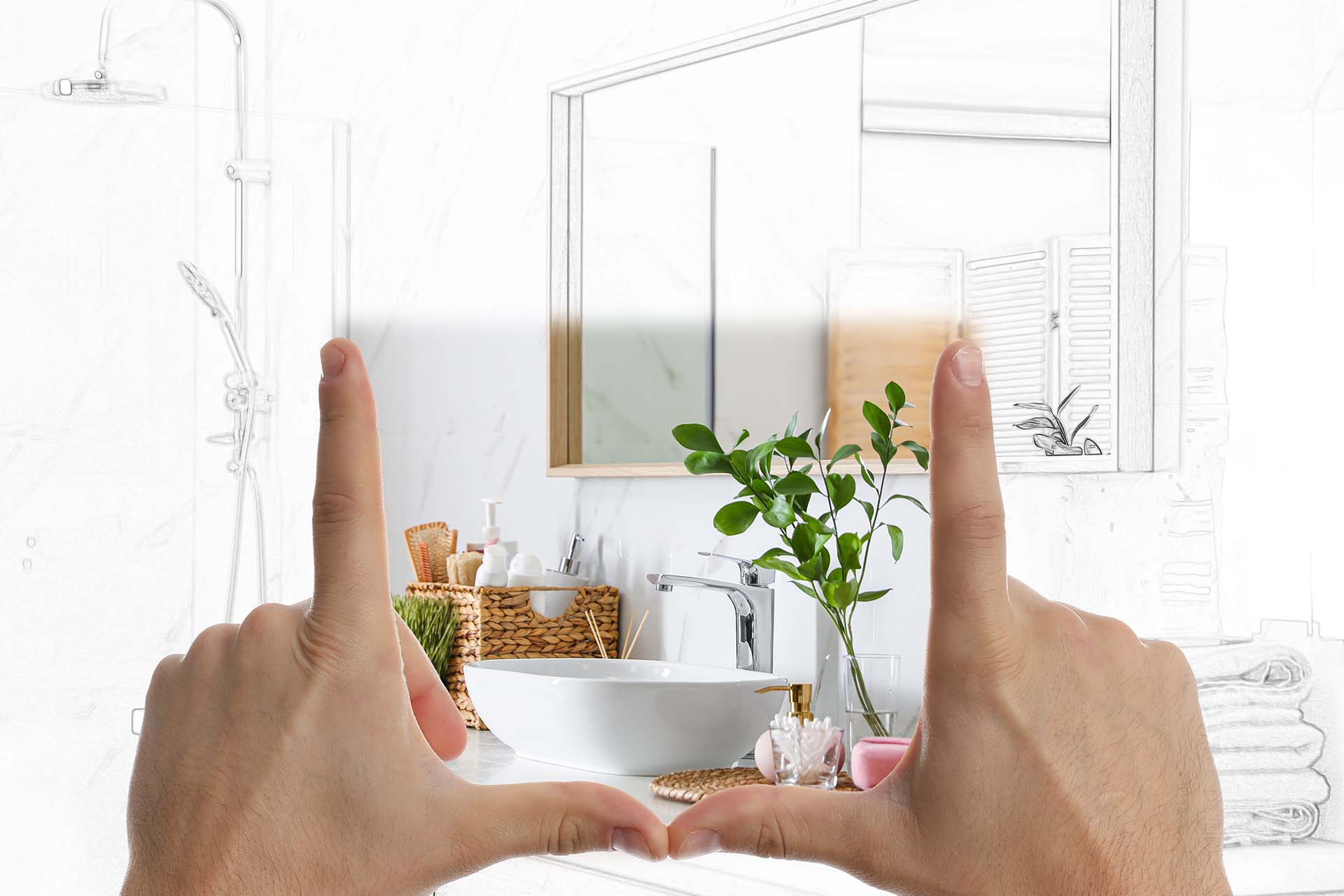
Our guide to bathroom renovation planning outlines all you need to know to create your dream bathroom sanctuary.
So whether you’re remodelling an existing space or installing a brand new suite in an extension, follow this guide for a stress-free route to bathroom renovation.
How to plan your bathroom renovation
In this section, we’ll guide you through the first steps of how to plan a new bathroom, including:
- Layout
- Building regulations
- How to find the right tradespeople
Layout
Layout is one of the first considerations you’ll make when planning your bathroom renovation.
If you’re installing a new bathroom in an extension, for example, you can plan your desired layout to suit your exact requirements.
However, unless you’re prepared to extend the budget to move soil pipes, plumbing, and structural features, you’ll need to work within your existing parameters when plotting the layout for your bathroom renovation.
Using graph paper, take some measurements to create a scale drawing including the position of:
- The soil pipe: This will determine the position of the toilet
- Windows and doors, including how far the bathroom door opens into the room to ensure adequate clearance
- Structural features, such as bulkheads, alcoves, or sloped ceilings
With this information nailed down, you can play around with the available space for your sanitaryware. Bear in mind the position of existing plumbing if renovating an existing bathroom.
A wash basin, or bathroom sink, is an essential item, but will you have one or two? Consider who’ll be using the space and how.
Similarly, it’s not necessary to have both a bath and shower enclosure. Your choice may be determined by available space, the needs of the people within your home, and resale potential.
Is it necessary for you to have storage space in your bathroom? If so, consider where you could either include built-in or free-standing storage solutions.
As a room that’ll have daily use, the layout needs to be both practical and aesthetically pleasing.
Building regulations
There’s not normally any need for building regulations if renovating an existing bathroom.
However, you will need building regulations if you’re:
- Adding a new bathroom as part of an extension
- Creating a bathroom in a former bedroom or storage area
It’s sometimes necessary to install extra wiring or pipework and/or alter the drainage if you’re upgrading your existing bathroom fixtures and fittings or changing the layout of your sanitaryware.
An experienced and certified tradesperson will ensure your new pipework and electrics adhere to building regulations.
Find a qualified and experienced bathroom fitter on Checkatrade
Save time searching. Use our handy search function below to find the best bathroom fitters in your area.
Read Jamie’s bathroom transformation story, and get inspired for yours
Bathroom renovation ideas and inspiration
Bathrooms have evolved from functional spaces to stylish sanctuaries with limitless options to create a completely personalised room.
In this section we’ll cover:
- Bathroom trends
- Bathroom colour schemes
- Choosing sanitaryware
- Floor and wall materials
- Mirrors and lighting
Bathroom trends
First, let’s look at some of the key trends to inspire your design choices.
1. Minimalism
A bathroom should be a peaceful, relaxing space, so declutter using sleek, minimalist fixtures and fittings.
A wall-mounted vanity unit with clean lines, a frameless glass shower enclosure, and elegant taps will help to achieve this.
A large mirror will serve as a functional element within your design too.
2. Natural elements
Taking inspiration from nature can help to create a soothing and organic bathroom environment.
Add texture and warmth by including a combination of natural elements such as stone, wood, and plants.
Incorporate natural light through larger windows or skylights to flood your bathroom with sunlight.
3. A spa-like oasis
Borrow ideas from your favourite spa to incorporate features that promote relaxation and rejuvenation.
Add a freestanding bath for indulgent soaks, a rainfall showerhead for a relaxing shower, and underfloor heating for a comfortable space even on colder days.
Don’t forget storage space for your soft, fluffy towels, scented candles, and bath oils.
4. Bold patterns and colours
For a bathroom with more personality, don’t be afraid to express yourself with pattern and colour.
Create a focal point with patterned tiles on the floor or as a splashback. Combine different textures and colours, for example, using mosaic tiles, textured wallpaper, or vibrant paint on an accent wall.
Try to strike a balance between big, bold colours and patterns and more subtle elements to avoid overwhelming the space.
Bathroom colour schemes
Just like the other rooms in your home, your colour scheme will help to set the tone for your bathroom. Some of the most popular bathroom colour schemes include:
1. Serene neutrals
Neutral schemes are timeless and versatile, lending an open and airy feel to the space, making it appear larger and more inviting.
Shades such as white, cream, beige, and light grey create a clean backdrop; the perfect canvas for showcasing colourful accessories or accent pieces.
Add visual interest with different textures or finishes, for example, marble or wood accents.
2. Calming blues
Blue promotes calm and tranquility, hence why it’s a popular choice for bathrooms.
Shades such as sky blue, aqua, or powder blue, create a soothing atmosphere reminiscent of the ocean or clear skies.
Consider blue on the walls, cabinetry, or tiles. Pair with crisp white accents and natural materials such as bamboo or rattan.
3. Nature-inspired greens
Green colour schemes bring a touch of nature into your bathroom, creating a refreshing and invigorating space.
Shades such as sage green, mint, or moss will create a tranquil space.
Green can be incorporated in your choice of wall paint, tiles, or even plants. Match with earthy tones such as wood finishes or natural stone, to create a calming vibe.
4. Sophisticated greys
Grey colour schemes are modern and versatile. Lighter tones provide elegance while darker shades create a more dramatic and sophisticated atmosphere.
Grey shades – from light ‘greige’ to deep charcoal – will complement various other colours and design styles with ease.
Metallic accents such as brass, gold, or copper will enhance the contemporary feel.
5. Bold monochromatic
Monochromatic colour schemes create a striking impact in a bathroom.
By choosing a single colour and using the different shades and tones within that colour family, you’ll acheive a bold and modern style.
A popular way to do this is using shades of black or charcoal paired with white or light grey. Use patterned tiles, contrasting textures, or vibrant fixtures for visual interest.
Choosing sanitaryware
Sanitaryware refers to the essential fixtures and fittings within the bathroom including the toilet, sink, bath, and shower. But how do you select the right sanitaryware for your bathroom renovation?
1. Needs and space
Consider how you’ll use the bathroom and the space you have available.
For example, if you’re designing a family bathroom, it’s important to include a bath. If you’re short on space, an over-bath shower is a clever addition. And if you fight over the sink, add another basin (space permitting).
There are standard measurements for many of the items you’ll install in your new bathroom. For example, the minimum space for a shower cubicle, the height of a shower curtain rail, and even the height of the toilet roll holder.
A professional tradesperson will take care of these smaller, but important, details, with ease.
2. Style and theme
Sanitaryware comes in various shapes, colours, and finishes, so you can opt for a range that suits your overall design.
Whether you’re after a sleek, modern look, or a more traditional feel, you’ll be able to find the right style sanitaryware for your bathroom design.
3. Quality and durability
For items that are in daily use, aim for the best quality you can afford.
Do your research online, check reviews and ratings, and buying guides to be sure you make the right choice for your needs.
Remember, cheap isn’t always best.
4. Environmental considerations
Many sanitaryware items have water-saving features, which is good news for both the planet and your utility bills.
Examples include dual-flush toilets, tap aerators, and showers with flow limiters.
5. Comfort and functionality
Finally, pop into a bathroom showroom to check you’re happy with the size, height, comfort, and ease of use of the sanitaryware.
For example, do you want a wall-hung toilet for easier cleaning? What functionality do you want in a shower? Want to relax in the bath? Go for a comfortable design.
Floor and wall materials
The variety of shapes, sizes, textures, and colours available for floor and wall coverings in a bathroom can make it hard to narrow down your choices.
Creating a mood board allows you to collect ideas, colour schemes, and design elements in one place. This helps to define your visual concept, empowering you to make the right purchases.
Some of the main points to consider to help choose the best floor and wall materials for your bathroom include:
1. Moisture and water resistance
Look for materials that are water-resistant, such as porcelain or ceramic tiles for floors and walls.
That said, acrylic or PVC bathroom wall panels are becoming a popular choice, especially with the range of designs available.
If using paint on the walls, select a specialist bathroom paint for the best results.
2. Durability and maintenance
Choose materials that can withstand heavy traffic as a bathroom is a well-used area.
Avoid materials prone to scratching, staining, or warping, or those that require lots of maintenance.
3. Style and aesthetics
Again, take a look at your mood board to identify the wall and floor materials that will help to achieve your overall design.
- Large tiles and polished porcelain will create a sleek, contemporary look
- Natural stone will give an earthy, rustic feel
- Subway tiles are classic and timeless
4. Practicality
Bathroom safety is another key consideration in the materials you choose.
Make sure your floor materials are slip-resistant to help prevent accidents. Matt or textured tiles provide better traction.
Mirrors and lighting
A bathroom should be well-lit and inviting for both practical and aesthetic reasons.
Maximise natural light with larger windows and/or a skylight. Add ceiling spotlights and task lighting around the vanity area or mirror.
A mirror over the sink will instantly make your space appear bigger.
Need help bringing your ideas together?
Find an experienced bathroom fitter to help create your dream bathroom.
Project management
It’s often possible to instruct a qualified builder who’s able to complete all aspects of fitting a bathroom: tiling, electrical work, and plumbing.
Alternatively, you might instruct a builder to manage your renovation, drawing on their network of trusted tradespeople to project manage the various trades for you.
However, if you plan to coordinate this yourself, you need to know how to project manage a bathroom renovation.
In this section, you’ll find:
- A standard schedule of works for a bathroom renovation
- The tradespeople you’ll need
- Typical costs for a bathroom renovation
Bathroom renovation timeline
A bathroom renovation will vary depending on the scope of the work and how many trades need to be called upon, e.g. for electrical work, plumbing, plastering, and general building work.
A simple install will take a few weeks, but larger and more complex designs can take several weeks to complete.
Our schedule of works, below, provides an outline for the typical process for renovating a bathroom, so you know what to expect:
- Create a brief for your project and decide on a budget
- Select your tradespeople and share your brief with them
- Sign a written contract and agree on a schedule
- Choose your sanitaryware, materials, fixtures and fittings, and paint colours
- The existing suite will be removed
- First fix plumbing and electrics (installing new services/dealing with those now void)
- Level the walls (plastering/ plasterboard)
- Plaster the ceiling
- Level and prepare the floor
- Second fix plumbing (installing sanitaryware)
- Second fix electrics (installing lights, switches, sockets, extractor fan, shaver points, electric underfloor heating)
- Tiling (walls and floors)
- Painting and decorating
Remember to obtain the necessary certificates for building regulations approval. You’ll need to keep these safe.
Which tradespeople are needed for a bathroom renovation?
Do you need a plumber for a bathroom renovation, or can a builder cover all bases? It can seem confusing knowing who to call upon.
As mentioned earlier, it’s often possible to find a builder experienced in all aspects of bathroom renovation. That is, they can complete any necessary structural work, tiling, electrics, plumbing, and fitting.
Depending on the extent of your renovation plans, you may need a plasterer and decorator too.
Read Jamie’s bathroom transformation story, and get inspired for yours
How much does it cost to renovate a bathroom?
The cost of your bathroom renovation will depend on the options you choose, the size of your bathroom, and the scope of the work.
The cost of a bathroom remodel will vary from the cost of an entirely new bathroom, for example.
Standard acrylic baths are cheaper than natural stone, and basic showers are more affordable than an all-singing-all-dancing model. There’s a huge variance in the choices you can make, which will impact the overall cost of the renovation.
It’s estimated that a straightforward bathroom refurbishment costs around £4,500 and over, depending on the spec of your bathroom.
Find reliable, trusted bathroom fitters quickly and easily
Ready to get started? Enter your postcode into our leading directory to find highly qualified, approved tradespeople in your area.
The Checkatrade guarantee
With our free guarantee, your job is covered for up to 12 months to the value of £1,000*.
To make sure your job is guaranteed, simply follow these three steps:
1. Book through Checkatrade
Use the member’s Checkatrade contact details to get in touch so we can register your job.
2. Keep a record of your job
If you need to claim, we’ll ask for more details.
3. Leave a review
When your job is done, simply leave a Checkatrade review.
*Other eligibility criteria and T&Cs apply.
Find and book your trade with us and we'll guarantee their work up to £1,000*.
Guaranteed for 12 months. Eligibility and T&Cs apply

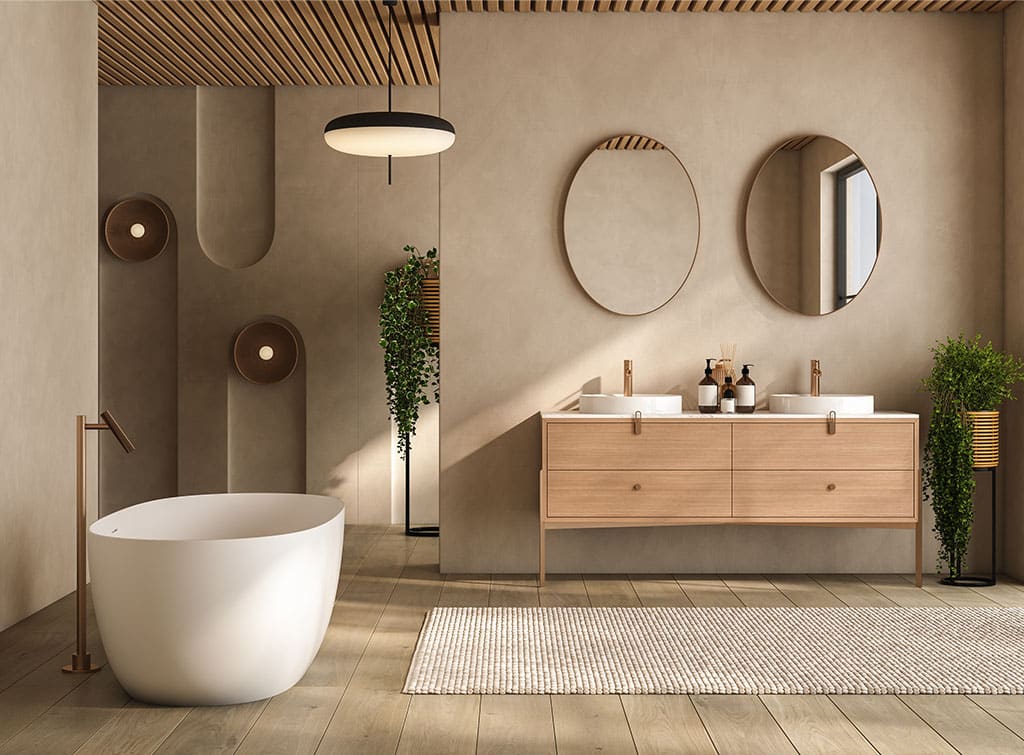
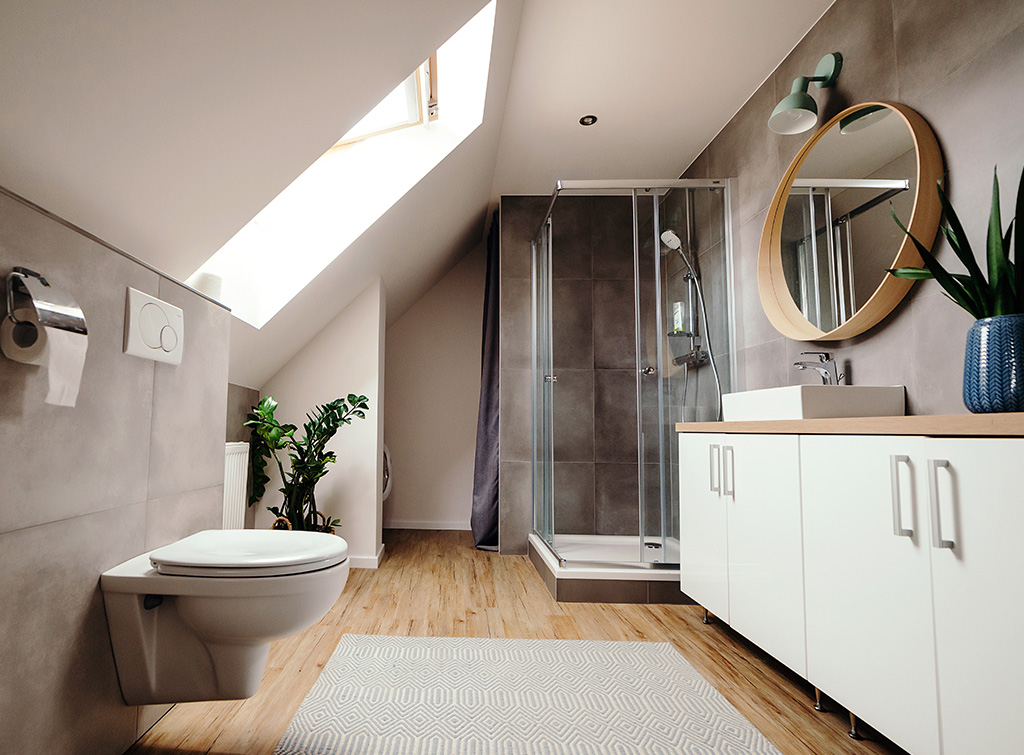
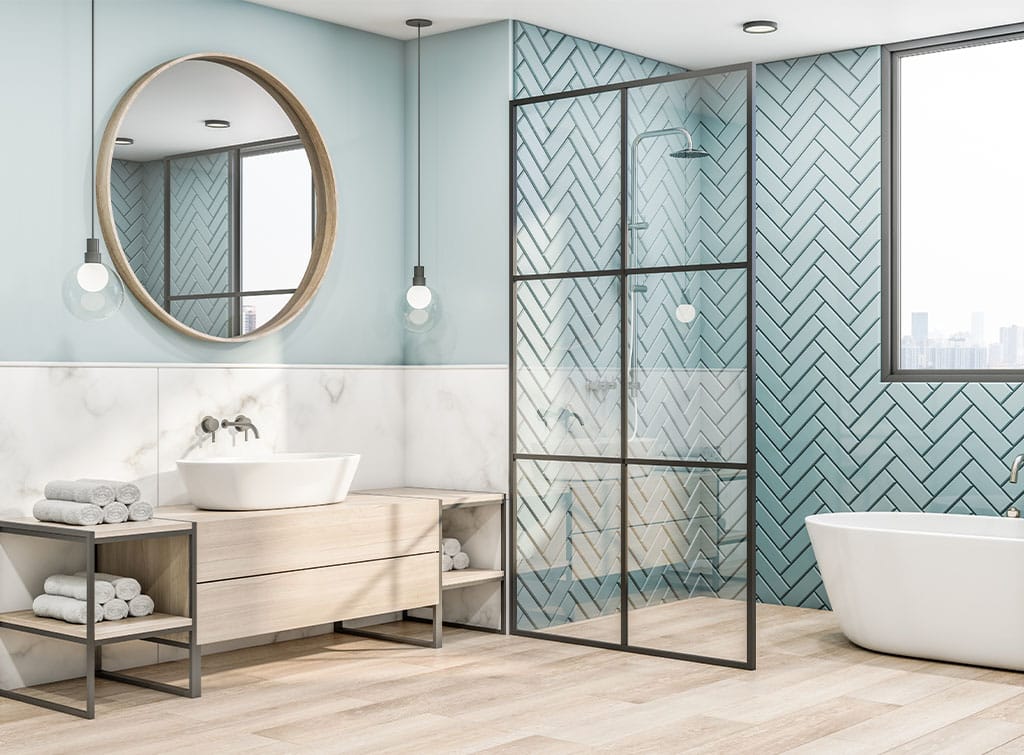
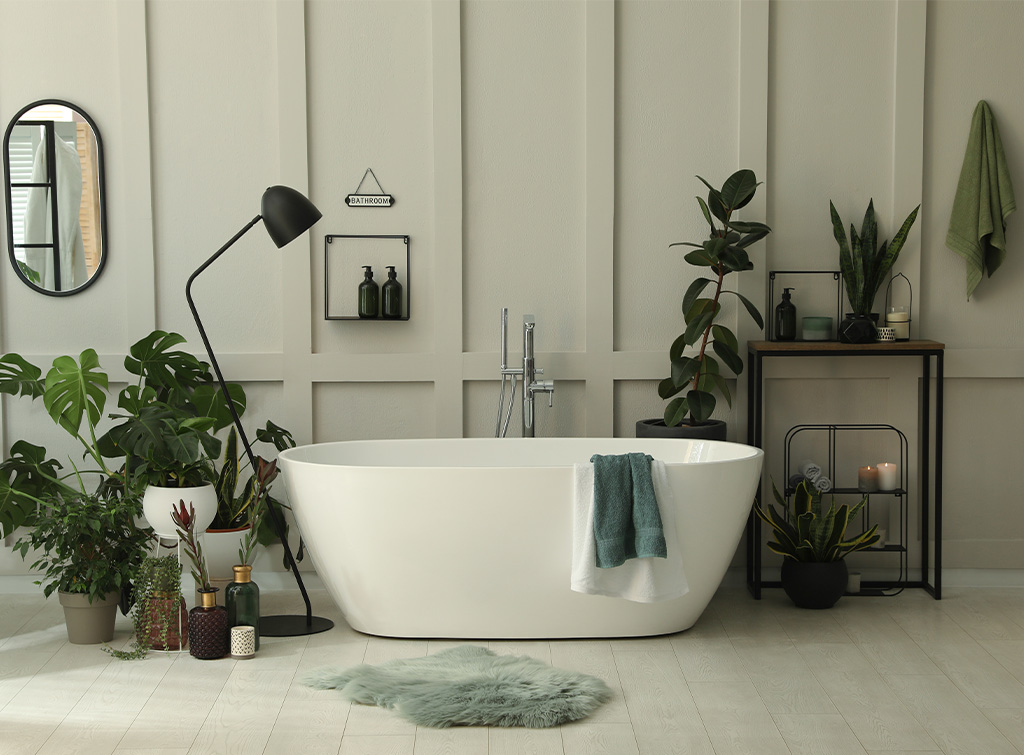

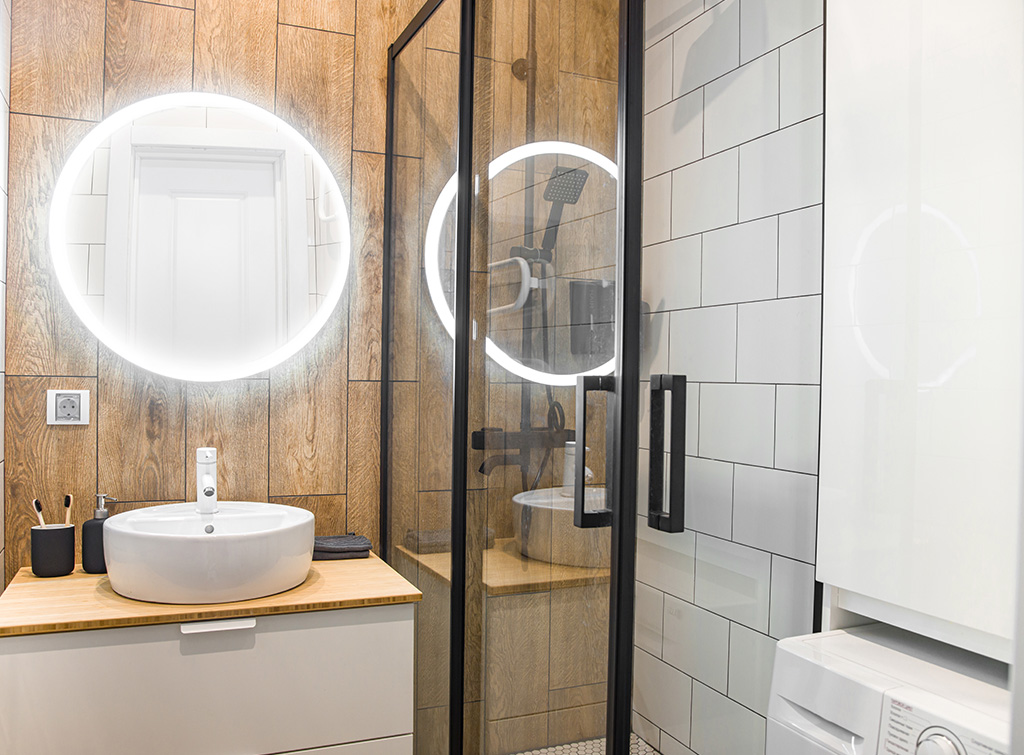
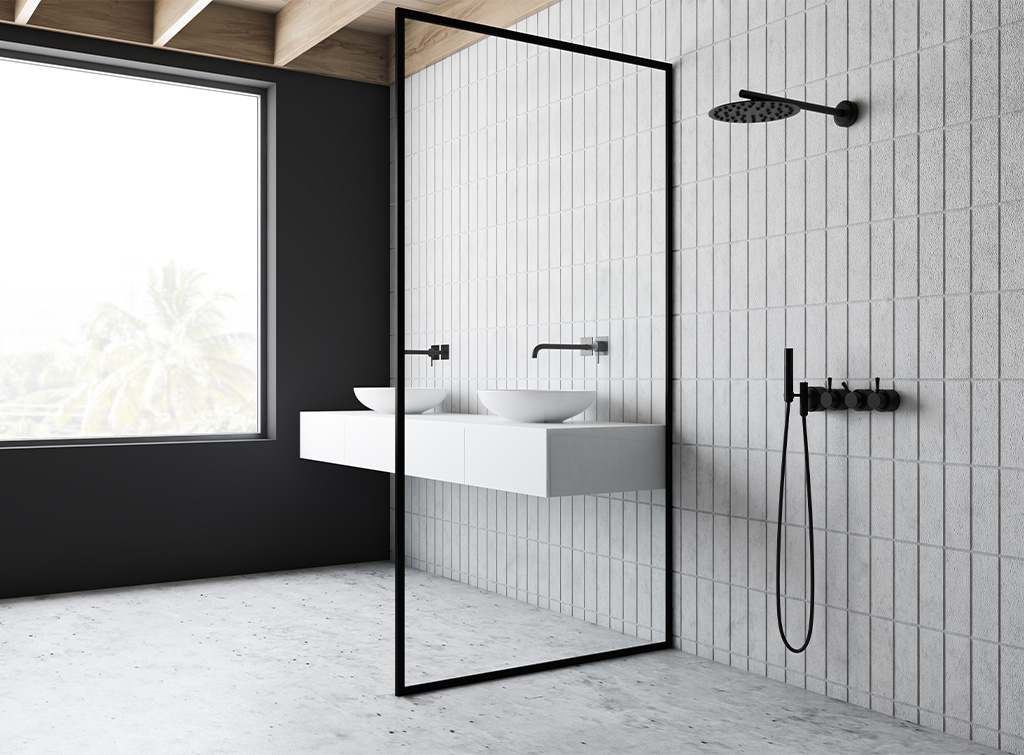
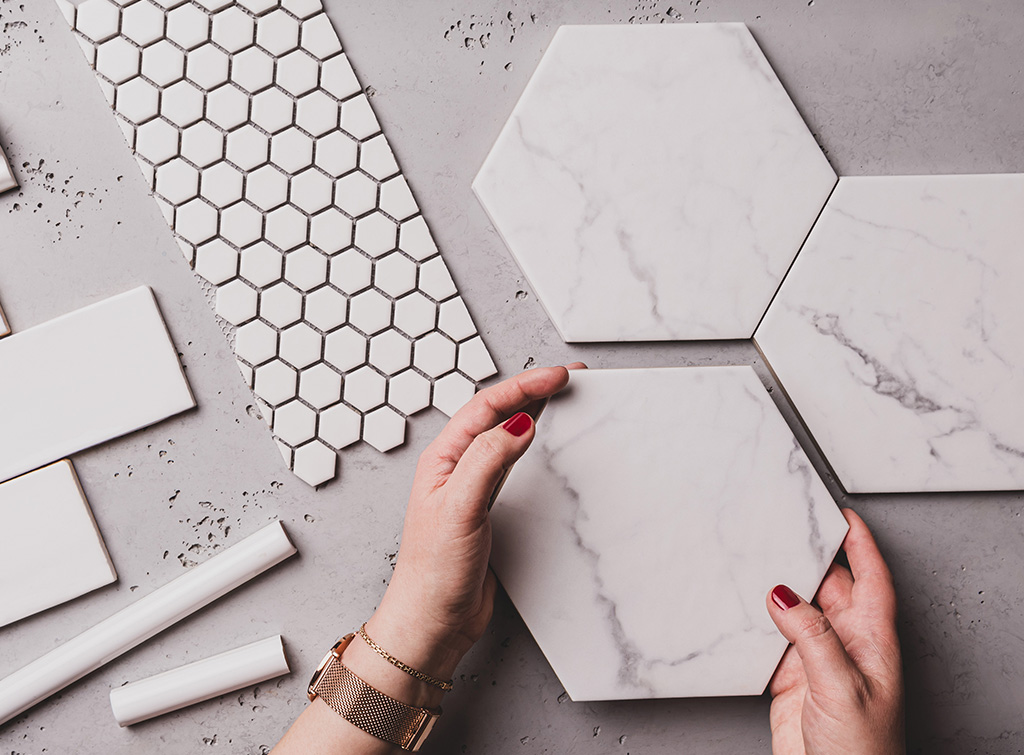
No comments yet!